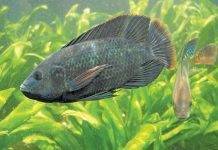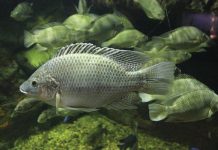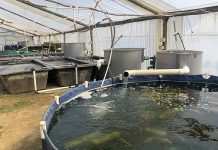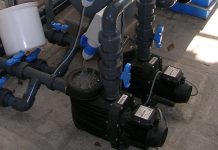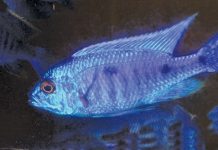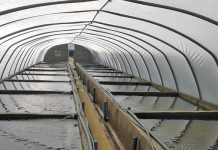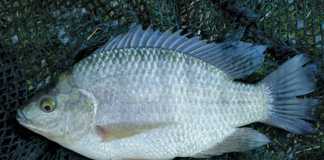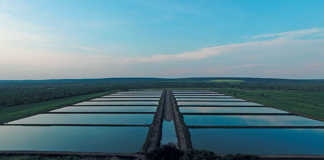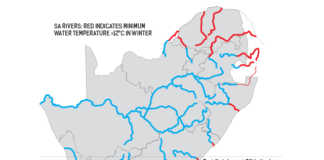
The recent change in environmental policy permitting certain aquaculture systems to use Nile tilapia (Oreochromis niloticus) based on their degree of biosecurity, raises important questions. What makes a system ‘biosecure’? Which criteria are used to assess security? Where will biosecure systems be allowed, and where not? In the next few articles of this column, we’ll have a closer look at these issues.
Let’s begin by taking two extremes: a borehole-supplied re-circulating system in arid Limpopo with no surface water nearby, and a pond farm on the flood-plain of a river in northern KwaZulu-Natal. What are the real ‘bio-risks’ of Nile tilapia invading the natural environments from these systems and hybridising with, or displacing, local Mozambique tilapia (O. mossambicus)?
The probability of fish escaping from the former example is virtually zero, but the risk from the latter is moderate to high. Most introductions do not occur by fish escaping from water containments, but due to human factors. Accidents do happen, especially in cage farms where live fish are handled close to water, or pond farms that flush into rivers.
Impossible to police
Most invasions of aquaculture species, apart from cages or ponds, arise from fish being given by one person to another. For example, a farmer in Mpumalanga may ask a friend in Limpopo for a few Nile tilapia for his farm dam. Because the area’s winter water temperatures are higher than 12°C, the fish may establish a population and after a few years displace the indigenous tilapia. Or a farmer from the Eastern Cape may catch catfish (Clarias gariepinus) in the Griep Dam and release them in his farm dam, which breaks the following rainy season, causing the catfish to invade the entire river system.
No amount of ‘paper conservation’ or regulation will stop this behaviour. In theory, a farmer can be prosecuted, but legally proving a violation is nearly impossible. The main point here is that an alien fish species has invaded a catchment without the involvement of aquaculture. Biosecure re-circulating fish farms usually comprise hothouse tunnels with filtration. Effluent is flushed into containments unconnected to any natural water bodies.
If correctly designed, they can be made 100% escape-proof. Since fish can easily be transported everywhere by road, the conservation risk is not a biosecure facility per se; it is the ethics of the operator and his staff. Will it ever be possible to legislate for the situation described here? The answer is no. Certified systems, professional operators with good track records, membership of professional organisations, and self-policing will go much further than blind faith in zoning ever will.

